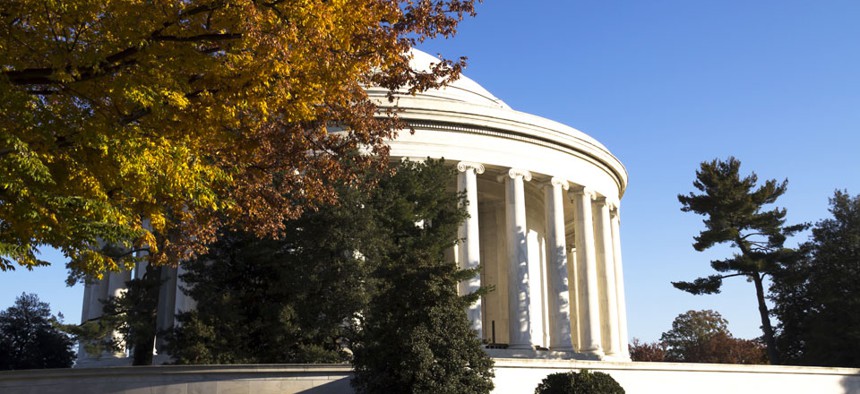
multitel/Shutterstock.com
When Congress failed to stop the sequester in the spring, Washington braced itself for a terrible summer.
The White House canceled tours. The National Park Service cut back its staff on the Mall. The National Archives and the National Arboretum cut their hours. The Smithsonian closed rooms in its museums.
Lawmakers predicted public outcry and a devastating blow to Washington's summer tourist season.
And then ... it didn't happen.
Despite all the dire warnings of doomsday scenarios, Washington is enjoying a banner year for tourism.
Visitors to the District and its many museums and monuments are up. According to Destination DC, the tourism branch of the D.C. government, hotel occupancy for the first week of August was up 9.2 percent over last year. People are spending more money on hotels, as well, with the daily rate for stays up 1.5 percent to $156.42 per night. The city is also hosting more business meetings and people are staying longer.
At the Smithsonian museums, there have been slightly more visitors in the period this year between January and July then there were the same time last year—20.6 million visitors compared with 20.4 million.
So, why didn't the doom and gloom come to pass?
Part of it has to do with how different entities dealt with the cut.
Take the Smithsonian. It had to cut $41 million from its budget this year. It was able to hide most of the cuts from the public by reducing staff travel, activities, training, and hours, closing only three small aspects of its many museums in Washington: one portion of the third floor of the Hirshhorn Museum, one room in the Castle that holds some exhibits, and one room in the National Museum of African Art.
"Our visitors wouldn't cancel a trip to Washington, of which Smithsonian is a big part, because a part of one exhibit they never heard of was closed," Smithsonian spokeswoman Linda St. Thomas said. "We did almost everything through administrative cuts that the public wouldn't notice."
Over at the White House, the administration decided to cancel tours because of cuts to the Secret Service—a necessary move, according to officials; a political move, according to critics. But only 3 percent of the 18 million people who visit Washington every year actually go the White House.
Another reason the cuts haven't had as large of an impact has to do with the District itself. "People are still coming here because there's so much to see and other places for them to spend money," said Barbara Lang, president and CEO of the District of Columbia Chamber of Commerce. She operates a tourist center near Chinatown, where she said she directs people not only to the Mall, but also to sites elsewhere in the District like the U Street and H Street neighborhoods, or specific places like the Spy Museum or Madame Tussaud's.
Over at the D.C. government, officials are attempting to attract businesses and organizations to hold meetings and conferences. The federal government may be the largest employer in the District. But hospitality is second. "We do know that there is an extraordinary effort on the part of the city to book smaller meetings in what would be considered an off-peak time," said Destination DC spokeswoman Kate Gibbs. "This is a season where usually meetings are few and far between."
And, of course, there's the improving—albeit slowly—economy.
Visitors aren't even mentioning sequestration among their concerns for Washington, said Lang. She says the only sequester-related complaints she receives are about long lines at the airports stemming from cuts at the Transportation Security Administration.
However, these officials warn that while the summer tourism season has been strong, people should still be worried about the damaging effects sequestration might have in the long term. If Congress and the White House can't agree on a budget in the fall, the cuts could continue—and the District may not be able to hide their effects from the public much longer.
St. Thomas cautions that a full fiscal year would have required a $65 million cut for Smithsonian. "Obviously, the higher the cut, the more it is for us to not affect anything the public does," she said. "We're not going to start charging admission or anything."
As tourism season nears its close in Washington, so begins the season for business travelers. And the District relies heavily on this commerce. But if Congress can't get past sequestration, or even heads toward a government shutdown, that could effect business travel. "If they're not coming here to do the business of the government, then that becomes a problem," said Lang.
In any event, Lang said it's too soon to celebrate.
"I'm not sure that the impact of what everybody was scared about sequestration has come to pass yet," Lang said. "I think that it's coming, but I don't think it's happened as fast as everybody had originally thought."
(Image via multitel/Shutterstock.com)






